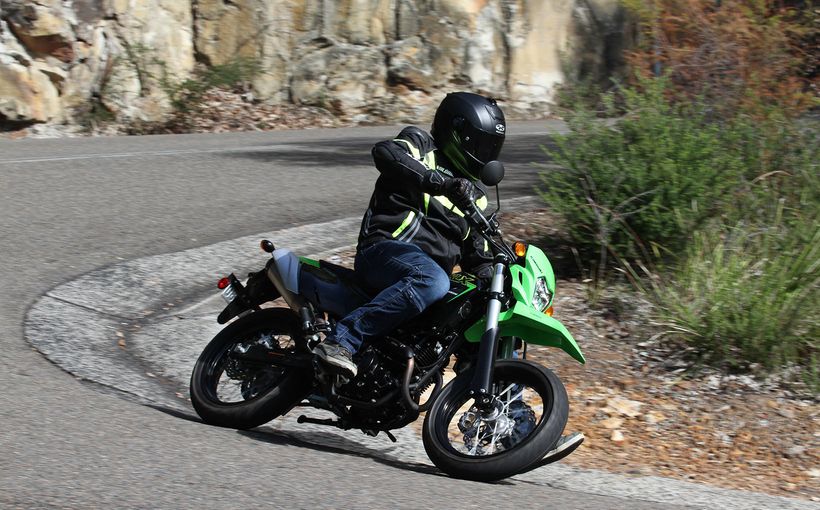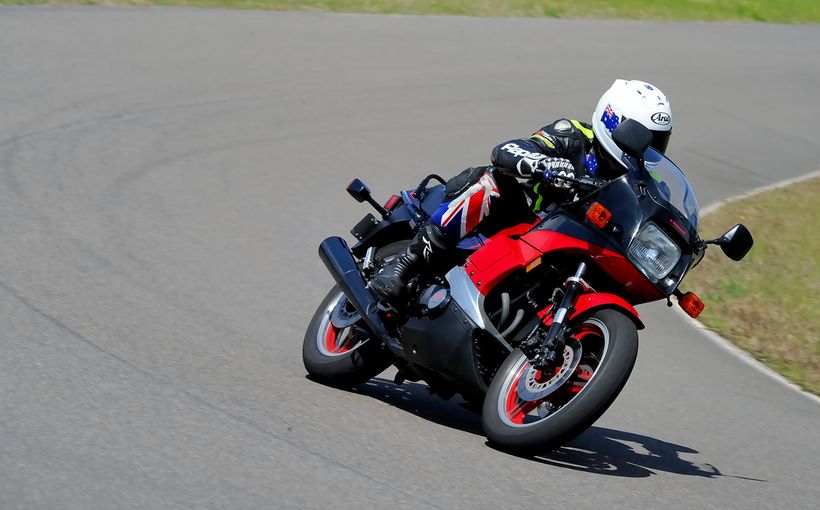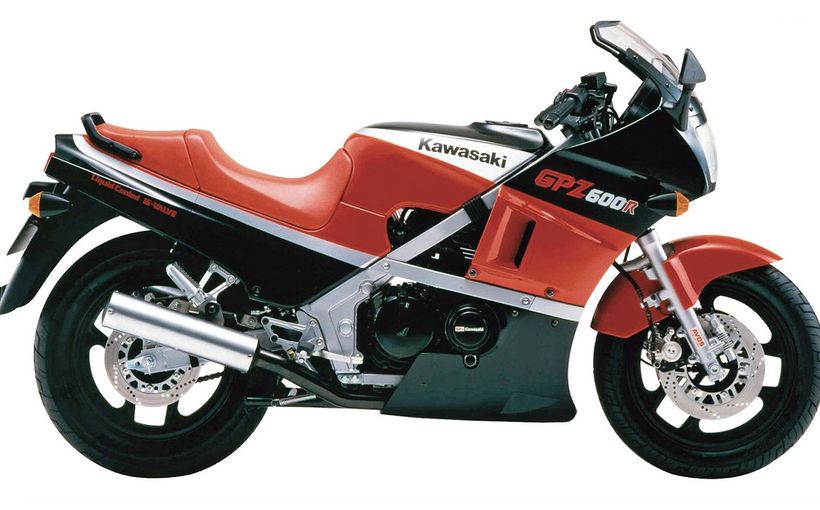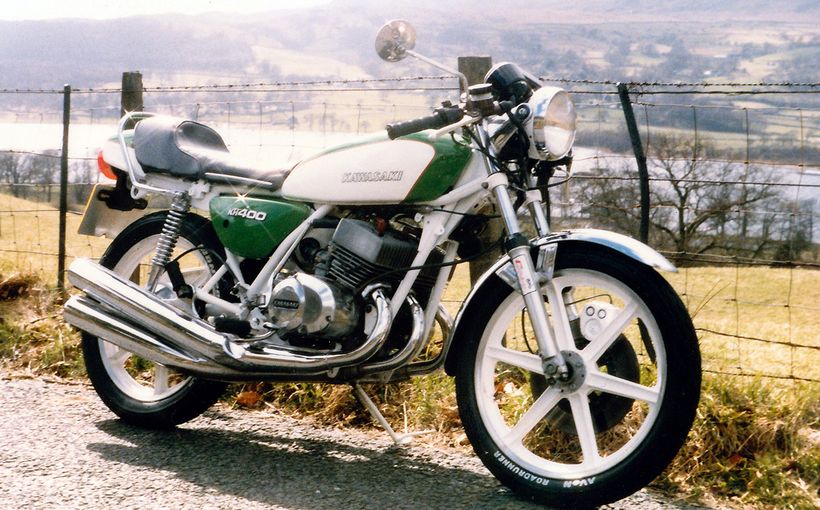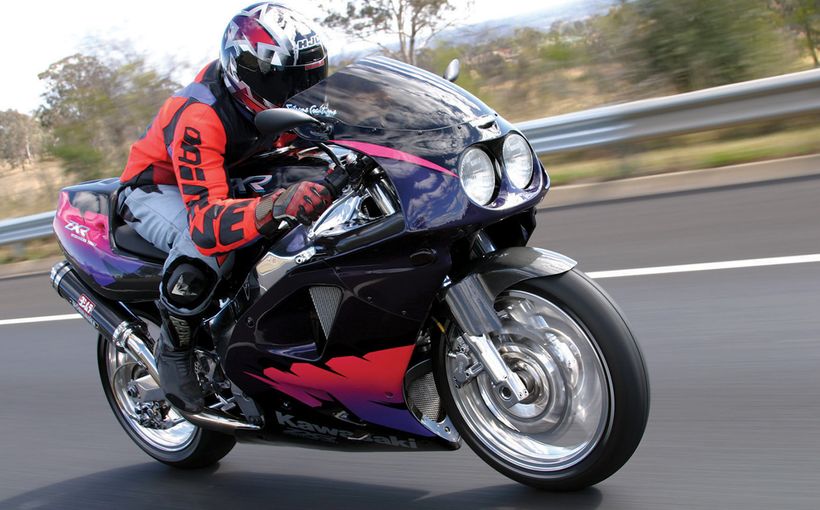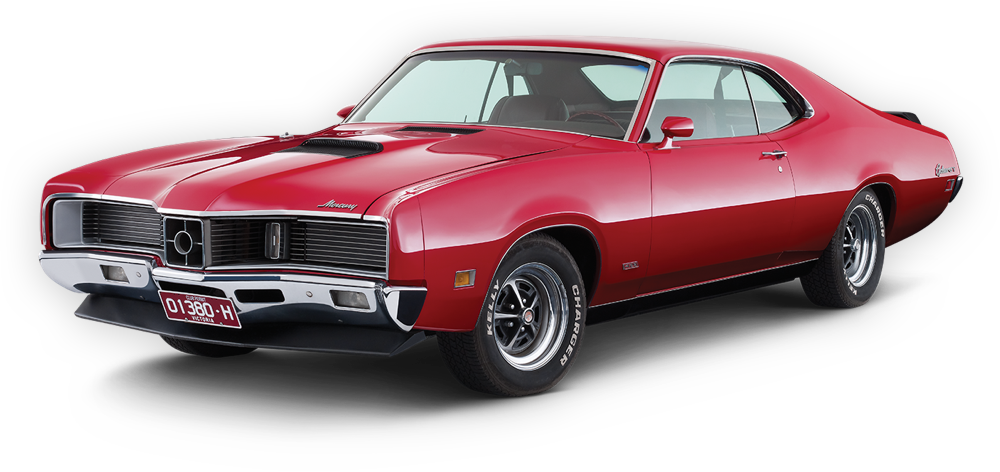Kawasaki Triple: Two-stroke superbike that smoked the competition

“The motorcycling equivalent of the Sex Pistols, the Kawasaki H2 Mach IV 750 stuck its middle finger firmly in the face of respectability when it burst onto the road in 1972,” wrote Motorcycle Classic’s Robert Smith.
“Essentially a scaled-up version of the Kawasaki H1 Mach III triple, with equally evil handling and similarly violent performance, the Mach IV was, in the hands of an inexperienced rider, an accident waiting to happen.”
If you do any research on Kawasaki’s infamous breed of air-cooled, triple-cylinder, two-stroke motorcycles of the 1970s, you’ll discover historical consensus on this judgement. The term ‘widow maker’ is often used to describe them.
Indeed, motorcycle writer Alastair Walker claims that Kawasaki’s reputation for building “scarily fast, good-looking, no-holds-barred motorcycles” began with this ferocious breed of three-cylinder strokers, which effectively set the stage for Kawasaki’s iconic Z1 900.
When the fearsome 500cc H1 Mach III triple was released in 1969 a global superbike war was erupting, triggered by audacious Japanese manufacturer Honda with its seminal CB750.

Image: Kawasaki
At that time, being king of the quarter-mile was just as important for motorcycles as muscle cars in terms of bragging rights. And the H1 quickly gained a reputation not only for ferocious acceleration but also endangerment for inexperienced riders due to its “light switch” power delivery and wayward handling.
However, it was only the early models that earned such notoriety, as the Kawasaki triples benefitted from continual refinement that partly tamed their beastly behaviour. As a result, the definitive H2 Mach IV 750 famously emerged the winner of Cycle magazine’s 1973 seven-bike shootout between the world’s best superbikes.
Even so, the short-lived H1 and H2 were consigned to history by 1975, unceremoniously abandoned due to a combination of changing consumer preference for large displacement four-stroke sports bikes and increasingly tough exhaust emission mandates.
Although offered in S and later KH model ranges, with engine capacities ranging from 250cc to 400cc, this review will focus on the two iconic triples that created the legend: the H1 Mach III 500 and H2 Mach IV 750.

Image: Kawasaki
Mach III H1 500 (1969-1975)
Although Kawasaki was the smallest of Japan’s four major motorcycle manufacturers, the two-wheeled division was part of the enormous Kawasaki Heavy Industries conglomerate founded by Skozo Kawasaki in 1878.
Although initially focused on ship-building, KHI expanded into other industries which in the aftermath of World War II included motorcycles, when it tooled-up to manufacturer small two-stroke petrol engines under the Meihatsu brand Kawasaki had recently acquired.
In 1961 Kawasaki also took control of Japan’s oldest motorcycle maker, the Meguro Manufacturing Company, and was soon turning out Meguro motorcycles from 50cc to 500cc powered by a mix of small two-strokes and four-stroke twins.
1962 brought the first motorcycle to wear a Kawasaki badge and development of the Meguro-designed four-stroke twin up to 650cc. However, as these quaint Kawasaki models were based on 1950s designs, their outdated appearance and modest performance struggled to excite buyers in the company’s first foray into the lucrative North American market.

Image: Kawasaki
“Kawasaki management was quick to appreciate that in America, speed sold bikes, so they designed the 250cc Samurai A1 for the US market. A fast two-stroke, it did well from its introduction in 1967 and was soon followed by a 350cc version,” wrote Margie Siegal.
“By this time, the Honda CB450 Black Bomber was being marketed and the Suzuki Titan T500 was for sale. Clearly there was a market for mid-sized bikes from Japan, but Kawasaki wasn’t interested in marketing just another motorcycle. Kawasaki wanted to make a splash.”
That “splash” was the N100 plan hatched in 1967 to design the most powerful 500cc production motorcycle in the world. The key performance targets were 60hp (45kW) and shattering 12-second quarter-mile times, both of which were previously unimaginable for a mass-produced half-litre motorcycle.
Kawasaki engineers decided a relatively simple piston-port two-stroke design would combine high power (and torque) outputs with low weight to deliver a potent power-to-weight ratio.

Image: Kawasaki
They also decided a new three-cylinder design would be superior to an enlarged version of the 250cc Samurai twin, given that an inline triple’s smaller cylinders/pistons would offer power, weight, smoothness and cooling advantages.
The electrifying result of their efforts hit Kawasaki showrooms in 1969. Although the new H1 Mach III 500 may not have travelled at three times the speed of sound, as its evocative name suggested, it immediately established a reputation for face-distorting acceleration.
Its light and compact 498cc inline triple (with five-speed gearbox) featured air-cooled cylinders inclined at 15 degrees, a robust six-main-bearing crankshaft, three race-style 28mm Mikuni carburettors, two exhaust pipes (aka expansion chambers) on the right side and one on the left plus a state-of-the-art 25,000-volt CDI (Capacitor Discharge Ignition) in place of traditional breaker-points.
Above all, it achieved the N100 project’s ambitious target of 60bhp (45kW) at 8000rpm and 41 ft/lbs (55Nm) of torque at 7000rpm from less than 500cc.

Image: https://cars.bonhams.com
To put that astounding achievement into perspective, Honda’s groundbreaking CB750 superbike also released in 1969 'only' produced 66bhp and 44ft/lbs from its larger and heavier 736cc four-stroke inline four. And the Honda’s hefty 218kg dry weight ensured the much lighter Kawasaki (174kg) had a superior power-to-weight ratio of 1kW/3.86kg compared to the Honda’s 1kW/4.34kg.
This resulted in Kawasaki advertising claiming the H1 Mach III 500 was “the world’s fastest production motorcycle” with “unbelievable quarter-mile acceleration” of 12.61 seconds at 111.38mph (180km/h), which was certified as a world record by the American Hot Rod Association.
Those scorching performance claims were largely validated by magazine testers, who also agreed that the mercurial Mach III represented a clear and present danger for novice riders.
This was due to some undesirable traits in those raw early models, namely the engine’s narrow and explosive power band. There was little response initially before a sudden surge of frame-twisting torque from about 5000rpm, when the relatively crude piston-port design approached peak efficiency and all hell broke loose as it rapidly spiked to maximum power at 8000rpm.

Image: Kawasaki
The response was so brutal the Mach III could easily set fire to its rear tyre and lift the front one clear off the deck. This sudden wheel-standing tendency was also blamed on an overly short rear swingarm, which combined with alarming high-speed wobbles caused by flexing in its “double-loop aircraft alloy frame” (the Mach III could top 190km/h) and mediocre drum brakes of the period ensured a white-knuckle ride even for experienced riders.
As a result, the Mach III was immediately in the cross-hairs of road safety zealots. And its noisy “ring-deng-dang” exhaust note, high fuel consumption and signature haze of oil-tinged blue exhaust smoke (at its plug-fouling worst at low speeds in city traffic) were despised by the rapidly growing environmental movement.
Not surprisingly, its wild quarter-mile credentials combined with a rebellious outlaw image and affordability (USD $995 or about $8500 today) proved popular with the many young male riders the Mach III was aimed at.
Motorcycle historian Clement Salvadori summarised this appeal, in claiming that although it “was one of the least useful motorcycles available on the market” it sold well because “it could blow just about anything else off the road – for less than $1000.”
However, by 1975 it was gone. Even so, history has been kind to this mercurial machine, as it maintains strong global interest among motorcycle collectors and historians alike. Indeed, the Mach III's historical significance was validated by inclusion in the Guggenheim Museum’s famous Art of the Motorcycle exhibition in 1999.

Image: Kawasaki
H2 Mach IV 750 (1972-1975)
Look at the claimed performance figures in the advertisement above for the H2 Mach IV 750: 12.0 sec quarter-mile and 126mph (203km/h) top speed. If performance addicts thought Kawasaki had peaked with the Mach III 500, they had to think again in 1972.
Kawasaki’s sales brochure pulled no punches. It stated that the new H2 had “only one purpose in life – to give you the most exciting and exhilarating performance.” It also warned that the H2 was “a machine you must take seriously” and that “it’s so quick it demands the razor-sharp reactions of an experienced rider.”
The H2 Mach IV 750 was the zenith of Kawasaki’s triple two-stroke program and released into a motorcycle world that was bursting with big-bore superbikes of similar displacement. It may not have travelled at four times the speed of sound, but its name hinted that more barriers would be broken.
Its 748cc air-cooled two-stroke triple was not just a bored-out derivative of the Mach III’s 500cc unit but an entirely new design, producing 74bhp (55kW) at 6800rpm and 57 ft/lbs (77Nm) of torque at 6600rpm.
These figures represented gains of 14bhp (10kW) and 16ft/lbs (22Nm) over its smaller sibling and well ahead of established 750cc rivals, including Suzuki’s liquid-cooled two-stroke GT750.
Mercifully, the Mach IV’s power delivery was less violent than the Mach III, with its larger displacement and less aggressive porting and ignition timing producing a slightly wider power band. Even so, its massively increased displacement (up 50 per cent), torque (up 39 per cent) and power (up 23 per cent) outputs presented even greater risks to novice riders.

Image: Two Wheels
Although now fitted with a front disc brake, critics warned that Kawasaki had not cured the alarming high-speed wobble of its half-litre sibling, even though the Mach IV’s twin-cradle frame was equipped with a new friction-type steering damper and mountings for an auxiliary hydraulic damper.
It also inherited the Mach III's insatiable thirst (as bad as 20 mpg or 12L/100km), ravenous appetite for rear tyres and a propensity to suddenly stand on its rear wheel under hard acceleration from a standing start, due to its high torque output and less than stellar chassis geometry.
Despite these shortcomings, the Mach IV upped the voltage of the Mach III’s electrifying quarter-mile performance, which no 750cc rival could match in 1972.

Image: Kawasaki
And in 1973, the Mach IV largely silenced criticism of it being a “one-trick pony” (only fast in a straight line) when Cycle magazine conducted a famous shootout between the H2 Mach IV and six of the world’s best superbikes from Japan and Europe.
This esteemed sextet comprised the Honda CB750, Triumph Meriden Trident, Norton Commando 750, Ducati 750, Harley-Davidson Sportster 1000 and Kawasaki’s sensational new Z1 900.
Dyno outputs were compared along with drag strip acceleration/braking distance and race circuit lap times. The Mach IV emerged as the overall winner, with the highest power/torque outputs, fastest quarter-mile time, second-highest top speed, shortest stopping distance with highest braking g-force, best power-to-weight ratio, equal fastest lap time, lowest purchase price and least expensive per unit displacement.
This emphatic result was just reward for Kawasaki’s faith in its two-stroke strategy but despite its stoic efforts in making the Mach IV more socially acceptable, by 1975 the odds stacked against its survival (ditto Mach III) were overwhelming.

Image: Kawasaki
As Motorcycle Classics summarised: “Time was running out for big strokers: they simply couldn’t meet new emission regulations without significant added expense. The new realities of the mid-1970s – oil crises, safety, environmental and noise regulations – put the H2 in the same position as Richard Nixon. They both had to go.”
However, by then Kawasaki’s obvious replacement, the four-stroke 900cc DOHC Z1 released in 1972, had quickly established a revered superbike reputation and seamlessly replaced the H-series two-strokes.
A short but spectacular era of quarter-mile motorcycle obsession had reached its inevitable conclusion, but these two Kawasaki Triples would leave an indelible performance legacy.



